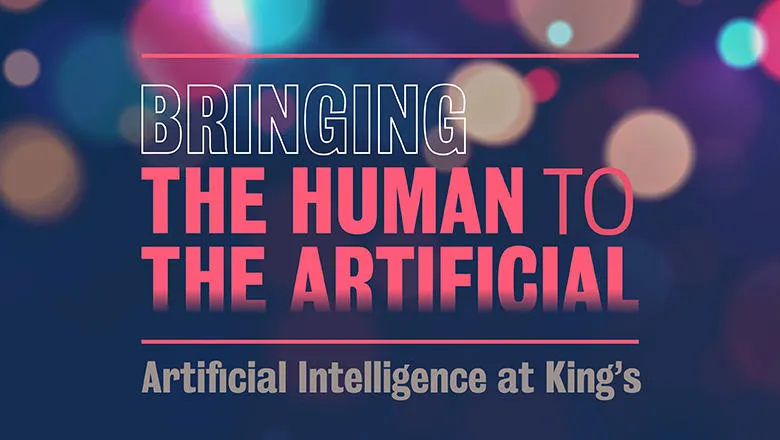Bringing the Human to the Artificial
Explore artificial intelligence and automated decision-making at this King's exhibition.
28 April 2023
This exhibit illustrates the ever-closing gap between human and artificial intelligence. It is part of the Bringing the Human to the Artificial exhibition.

Created by Munkhtulga Battogtokh, this exhibit illustrates the ever-closing gap between human and artificial intelligence. It asks what are the boundaries of the human mind that AI is closing in to, and more importantly, where to seek and find those boundaries. More specifically, it serves as an intuitive start for the viewers to think about the key problems in contemporary AI such as generalisation and robustness, while also emphasising the role that art can play in solving them by capturing the unique way in which we humans see reality and beyond.
Visitors will see a large lenticular print of the artwork, mounted on a wall that allows plenty of space around. The lenticular medium allows our artwork to change as one walks along the exhibit. Therefore, it invites the audience to move along the piece to see it from different physical perspectives, each of which will present them with various abstract perspectives of real-life objects that we cannot directly observe in reality but can only find in art. Thus, our artwork illustrates to the audience that human perspectives go beyond reality and that only art captures those perspectives without ever leaving the confines of the human mind itself. It not only promotes the application of art in the modern problem of AI development, but it also raises the same timeless question of what it means to be a human from two different starting points: art and AI.
Artificial intelligence (AI) raises questions about the very nature of intelligence itself, as the ever-closing gap between humans and machines pushes us to reflect on the capabilities and limitations of our own minds. Generative AI has recently attracted a lot of media and public attention, as it seemingly appeared to have closed the "creativity" gap between humans and AI. Indeed, the line between human intelligence and AI, which had previously been clear due to AI models' inability to abstract and generalise what they perceive, has been blurred now that AI models can decompose, combine, and generalise the features of their training data much more imaginatively than before. However, it is still too early to say that the human-machine divide is no more, as we must first thoroughly understand the implications of the new generative techniques for long-standing AI problems as well as understand the human mind itself.
Therefore, through an exploration of image spaces, the artist asks the following...
What are the boundaries of the human mind and, more importantly, where can we seek and find those boundaries? Answering these questions can help us solve the key problems in modern AI (like generalisation and robustness to noise) that are surprisingly difficult for AI models but trivial for humans. Can we find the answer from art, the only source of data that captures the unique ways in which we humans see reality and beyond?
Visit the Aha! project page
View Munkhtulga Battogtokh's profile
Find out about Alice White
Learn about the UKRI CDT in Safe and Trusted Artificial Intelligence
Explore artificial intelligence and automated decision-making at this King's exhibition.